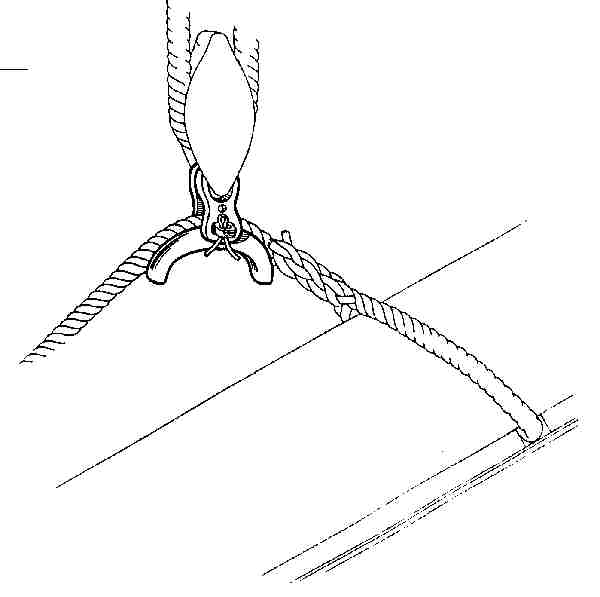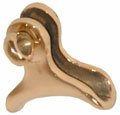-
Posts
5,661 -
Joined
-
Last visited
Content Type
Profiles
Forums
Gallery
Events
Everything posted by Jack12477
-
Congrats ! Is it in your same field ?
- 1,090 replies
-
- showcase models
- vendetta
-
(and 2 more)
Tagged with:
-

Stage Coach by Sjors - Artesania Latina - WOOD
Jack12477 replied to Sjors's topic in Completed non-ship models
Wow ! Nicely done, Sjors. -

DN Iceboat by MikeR - FINISHED
Jack12477 replied to MikeR's topic in - Build logs for subjects built 1901 - Present Day
Wow ! Very nice Mike. I can just see it gliding across the ice. You did a great job capturing all the detail. Are you going to include a sail ? -

DN Iceboat by MikeR - FINISHED
Jack12477 replied to MikeR's topic in - Build logs for subjects built 1901 - Present Day
Mike, great job on the runner skate. Even the "parking" brake looks great. -
Nice, Greg! Great job on the rust and grunge weathering. Looks great alongside your other warships. Okay, Carl, your turn !
- 1,090 replies
-
- showcase models
- vendetta
-
(and 2 more)
Tagged with:
-
I have to agree with CDW, capsicum is red peppers native to the Americas, see https://en.m.wikipedia.org/wiki/Capsicum. It's related to nightshade which we consider to be a poison.
- 1,090 replies
-
- showcase models
- vendetta
-
(and 2 more)
Tagged with:
-
Gee, if you guys are worried about Denis being so far behind, you two could stop and treat your audience to some fine food. Carl could whip up some of his world renowned Dutch sherbert/sorbet and Greg could fire up the Barbie and rustle up some of those fine grilled Australian prawns. Maybe Denis could then catch up to you. Hmmmmmmm!
- 1,090 replies
-
- showcase models
- vendetta
-
(and 2 more)
Tagged with:
-
In the meantime things may get side tracked with family - I got a call the day after Memorial Day (US Holiday) that my younger brother's cancer treatment has stopped working and he's gone into at-home Hospice Care. He's been fighting it for the past 5 years. This cancer has no cure. Drove up to western NY yesterday (550 miles round trip in same day) to spend some time with him and his wife. So I may disappear for a while as I will probably be making quite a few more trips up to see him.
-
Been trying to fabricate the saddle for the gaff bridle, but haven't been able to make one that looks real on not way over scale. The look like the following pictures. Tried using some 1/16 hollow brass tubing filed down on one side to make a U shaped saddle but does look right to me. So I will keep experimenting.
-
WOW ! I'm with the others Piet, you really nailed it! Great looking model/diorama. Even my wife loves it.
- 378 replies
-
- java
- pacific crossroads
-
(and 2 more)
Tagged with:
-
Let's see ! We have popcorn and peanuts ! Did anyone bring Cracker Jacks too ! <pun intended>
- 1,090 replies
-
- showcase models
- vendetta
-
(and 2 more)
Tagged with:
-
I have a very large bag of roasted peanuts in the shells. You know ! The kind we used to get at the Ball Park. I could always rain the shells down on him after all we rafter sitters are in the peanut gallery, right !?!?
- 1,090 replies
-
- showcase models
- vendetta
-
(and 2 more)
Tagged with:
-

Miter boxes----What is the best one.
Jack12477 replied to roach101761's topic in Modeling tools and Workshop Equipment
Welfalck, the one that uses razor blades with saw teeth is quite rigid thanks to a rigid spine and works well on small stuff. And it is very easy to set for repetitive stuff too. The others I too have trouble with accuracy. -
Given the scale of the boat that certainly looks like a Garrison Flag, Dave. Nice touch.
- 742 replies
-
- constitution
- frigate
-
(and 1 more)
Tagged with:
-

Miter boxes----What is the best one.
Jack12477 replied to roach101761's topic in Modeling tools and Workshop Equipment
I use a combination of these three (available from MicroMark) a: micro miter box (use with micro razor blade saw pictured) b: duplicating jig c: aluminum miter box with saw Never had a problem with the aluminum box dulling the saw blades. I did use a plastic one for a while until I sawed right thru it after repeated use. -
I wish this thread had been available when I was struggling to build the roller for my Willie Bennett model. Likewise your explanation of the construction of the davits for the pusher boat. Nice work, Frank, and great explanation of the process. Your level of detail is perfect.
-

DN Iceboat by MikeR - FINISHED
Jack12477 replied to MikeR's topic in - Build logs for subjects built 1901 - Present Day
Ah yes, the curse of all ice boaters. Model looks good, like the choice of woods. -

DN Iceboat by MikeR - FINISHED
Jack12477 replied to MikeR's topic in - Build logs for subjects built 1901 - Present Day
Mike, do you stil have/sail your original DN ? Tom, the more the merrier -

DN Iceboat by MikeR - FINISHED
Jack12477 replied to MikeR's topic in - Build logs for subjects built 1901 - Present Day
Mike, good to see another ice boat build. Pulling up a seat to follow along -
Hi Mark, I don't have any first hand experience manning the tiller but from my observations riding on the ice boats there does not seem to be any significant vibration or kick, except if you go over a hummock, pressure ridge or open crack in the ice, then you really feel it - quite a jolt. But the tiller runner (as well as the fore runners under the runner plank) is designed to pivot vertically on a 1 inch diameter bolt that goes thru the chocks and runner, in addition the tiller runner has a fairly large rubber shock absorber between the runner and the backbone. So, normally the ride is smooth even over mildly rough ice (runner plank absorbs some of the roughness) Yes, except for the fact that there is no hull per se, the rigging is pretty much like any other sail vessel. Almost all of the boats in our club are gaff rigged; we do have one Lateen rigged and one Marconi rigged. Regarding the apparent wind, according to some articles I've read on the science behind why these boats go so fast, (in the simplest terms) the true wind pushes on the sail causing the boat to move forward and the sail to take the shape (form) of an airfoil (airplane wing); the apparent wind passing over the sail (airfoil) causes lift which in turn pulls the boat forward. This coupled with the almost complete lack of drag (friction) is what propels these boats to such high speeds. That's the most simplistic explanation - the science is a bit more complex. And the rules of navigation around other boats is similar also. We refer to hulled boat sailors as "wet water sailors", while we refer to ourselves as "hard water sailors". Yes it is a blast to sail on them. COLD but a blast. Here's a few more photos unrelated to the Rocket: The "Fleet" gathered on the Hudson River in March 2014 (boats from our club plus several other clubs in NJ, CT, RI, Long Island NY) Note the 2nd boat in from the right with the number 1888 on the sail - this is Rocket from NJ the one I'm modeling here. The tall boat (6th or 7th in from right) with the American Flag flying from the gaff is our (HRIYC) class 1 boat (50 ft) Jack Frost. This is only a small fraction of the total boats still sailing. The Cold Wave with her double cockpit ( don't remember what club she belongs to or who owns her) And the traditional "pot-luck feast" on the ice.
About us
Modelshipworld - Advancing Ship Modeling through Research
SSL Secured
Your security is important for us so this Website is SSL-Secured
NRG Mailing Address
Nautical Research Guild
237 South Lincoln Street
Westmont IL, 60559-1917
Model Ship World ® and the MSW logo are Registered Trademarks, and belong to the Nautical Research Guild (United States Patent and Trademark Office: No. 6,929,264 & No. 6,929,274, registered Dec. 20, 2022)
Helpful Links
About the NRG
If you enjoy building ship models that are historically accurate as well as beautiful, then The Nautical Research Guild (NRG) is just right for you.
The Guild is a non-profit educational organization whose mission is to “Advance Ship Modeling Through Research”. We provide support to our members in their efforts to raise the quality of their model ships.
The Nautical Research Guild has published our world-renowned quarterly magazine, The Nautical Research Journal, since 1955. The pages of the Journal are full of articles by accomplished ship modelers who show you how they create those exquisite details on their models, and by maritime historians who show you the correct details to build. The Journal is available in both print and digital editions. Go to the NRG web site (www.thenrg.org) to download a complimentary digital copy of the Journal. The NRG also publishes plan sets, books and compilations of back issues of the Journal and the former Ships in Scale and Model Ship Builder magazines.



